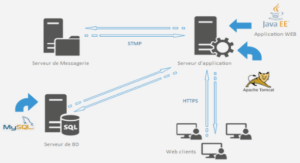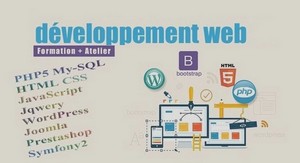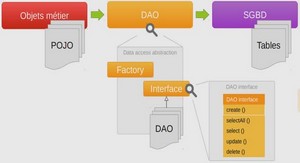Big Data Analytics Applications
Social Media Command Center
Last year, Blackberry faced a serious outage when its email servers were down for more than a day. I tried powering my Blackberry off and on because I wasn’t sure whether it was my device or the CSP. It never occurred to me that the outage could be at the Blackberry server itself. When I called the CSP, they were not aware of the problem. For a while, I was okay without receiving any emails, but then I started to become curious. So I turned to one obvious source: Twitter. Sure enough, I found information about the Blackberry outage on Twitter. One of my clients told me that his VP of Customer Service is glued to Twitter looking for customer service problems. Often, someone discovers the problem on Twitter before the internal monitoring organization. We found that a large number of junior staffers employed by marketing, customer service, and public relations search through social media for relevant information. Does this sound like an automation opportunity? A Social Media Command Center combines automated search and display of consumer feedback expressed publicly on the social media. Often, the feedback is summarized in the form of “positive” or “negative” sentiment. Once the feedback is obtained, the marketer can respond to specific comments by entering into a • Big Data Analytics conversation with the affected consumers, whether to respond to questions about an outage or obtain feedback about a new product offering. The marketing organization for Gatorade, a sports drink product, decided to create a Social Media Command Center to increase consumer dialog with Gatorade.12 Figure 3.1 shows the monitoring station with the dashboard. Big Data Analytics can be used to monitor social media for feedback on product, price, and promotions as well as to automate the actions taken in response to the feedback. This may require communication with a number of internal organizations, tracking a product or service problem, and dialog with customers as the feedback results in product or service changes. When consumers provide feedback, the dialog can only be created if the responses are provided in low latency. The automated solutions are far better at systematically finding the information, categorizing it based on available attributes, organizing it into a dashboard, and orchestrating a response at conversation speed.
Product Knowledge Hub
As consumers turn into sophisticated users of technology and the marketplace becomes specialized, the product knowledge seldom belongs to one organization. Take the Apple iPhone as an example. The iPhone is marketed by Apple, but its parts came from a large supply chain pool, the apps running on the iPhone come Figure 3.1: Gatorade Social Media Command Center Chapter 3: Big Data Analytics Applications • from a large community of app developers, and the communications service is provided by a CSP. Google’s Android is even more diverse, as Google provides the operating system while a cell phone manufacturer makes the device. The smartphones do not work in isolation. They act as WiFi hubs for other devices. So, what happens if I want to know how to tether an iPhone to an Apple iPad? Do I call my CSP, or do I call Apple? Would either of their websites give me a simple step-by-step process I can follow? Every time I get into these technical questions about products I am trying to use, I end up calling my son, who happens to know the answers to any such question. Recently, he decided to educate me on how he finds the answer, and so I was introduced to a myriad of third-party sites where a variety of solutions can be found. In most cases, we can find them by searching using any popular search engine. However, the solutions do not always favor the CSPs, and they are often dated, failing to take into account the latest offerings. Between the device operating system, the offerings from CSPs, and the apps, one must tread carefully through the versions to make sure the solution we discover is for the same version of software that is on the device. So now, we are facing data that is characterized by both variety and veracity. Can we use Big Data Analytics to solve this problem? The solution involves three sets of technologies. Fortunately, Vivisimo has packaged these technologies into its Velocity product, making it easier to obtain an integrated solution. The first part of the solution is the capability to tap any sources of data. A CSP may already have pieces of the solution on its intranet, put together by product managers or customer service subject matter experts. Or, the information may reside on a device manufacturer site or a third-party site. All this data must be pulled and stripped of its control information so that the raw text is available to be reused. The second part of the solution is to create a set of indices so that the raw information can be categorized and found when needed. Because many combinations of products exist, we would like to collect and combine information for the devices searched. The federated indexing system lets us organize the information for easy access. The third part of the solution involves creating an XML document against a query that can either be rendered by a mashup engine or made available to a third-party application. 18 • Big Data Analytics What we have created is a knowledge hub, which can now be used directly from a website or made available to the call centers. It significantly reduces call-handling time in the call centers and also increases first call resolution. By placing the information on the web, we are now promoting the CSP’s website as the source of knowledge, which increases web traffic and reduces the number of people who resort to contacting the call center. Figure 3.2 depicts the Product Knowledge Hub. Once we have created a single source of knowledge, this source can be used to upsell other products, connecting usage knowledge to product features and using the knowledge pool to discover new product or business partnership ideas. A lot of stray, fragmented knowledge about the products may be rapidly organized and find a variety of other uses.
Infrastructure and Operations Studies
A number of industries are exploring the use of Big Data to improve their infrastructure. In many situations, the best way to improve the infrastructure is to Figure 3.2: Product Knowledge Hub for a CSP Chapter 3: Big Data Analytics Applications • 19 understand its use and how bottlenecks or configurations impact performance. In the past, this data required extensive manual data collection costs. Big Data provides a natural source of data with minimal data collection costs. I will lay out examples from public services to illustrate this point. The city of Boston decided to use Big Data to identify potholes in the streets by sponsoring a competition in the analyst community. A winner came from Sprout & Co., a nonprofit group in Somerville, Massachusetts. The solution included the use of magnitude-of-acceleration spikes along a cell phone’s z-axis to spot impacts, plus additional filters to distinguish potholes from other irregularities on the road. The new algorithm made Street Bump, a free download in Apple’s App Store, a winner.13 This analysis can save significant road survey cost. Navigation systems can also use the cell phone data to avoid traffic congestion and offer alternate routes. This type of use of Big Data is one of the best ways to gain acceptance without getting into privacy or security issues. In another example, city bus and train agencies are making their real-time transit information available to riders. This information significantly improves the user experience and reduces the uncertainty associated with both planned and unexpected delays. Transloc (www.transloc.com) provides this information for riders using a variety of technologies, including smartphones, web, and SMS messages. It also provides prediction capabilities on expected arrival time. Once the app is loaded on a smartphone, the rider can use it to accurately estimate travel time and also review the travel route. IBM’s Smarter Cities® initiative is using Big Data in a number of applications directed at city infrastructure and operations. Location data from cell phones can be used to provide raw material for detecting traffic patterns. These patterns can then be used to decide on new transportation projects, to change controls, or to redirect traffic in case of an emergency. Another important application for Big Data Analytics is public safety. The New York Police Department is using Big Data for crime prevention.
Product Selection, Design, and Engineering
Product automation provides an enormous opportunity to measure customer experience. We take photos digitally and then post them on Facebook, providing an opportunity for face recognition without requiring laborious cycles in digitization. We listen to songs on Pandora, creating an opportunity to measure what we like or dislike or how often we skip a song after listening to the part of it that we like the most. We read books electronically online or on our favorite 20 • Big Data Analytics handheld devices, giving publishers an opportunity to understand what we read, how many times we read it, and which parts we look at. We watch television using a two-way set-top box that can record each channel click and correlate it to analyze whether the channel was switched right before, during, or after a commercial break. Even mechanical products such as automobiles are increasing electronic interactions. We make all of our ordering transactions electronically, giving third parties opportunities to analyze our spending habits by month, by season, by ZIP+4, and by tens of thousands of micro-segments. Usage data can be synthesized to study the quality of customer experience and can be mined for component defects, successes, or extensions. Marketing analysts can identify micro-segmentations using this data. For example, in a wireless company, we isolated problems in the use of cell phones to defective device antenna by analyzing call quality and comparing it across devices.





